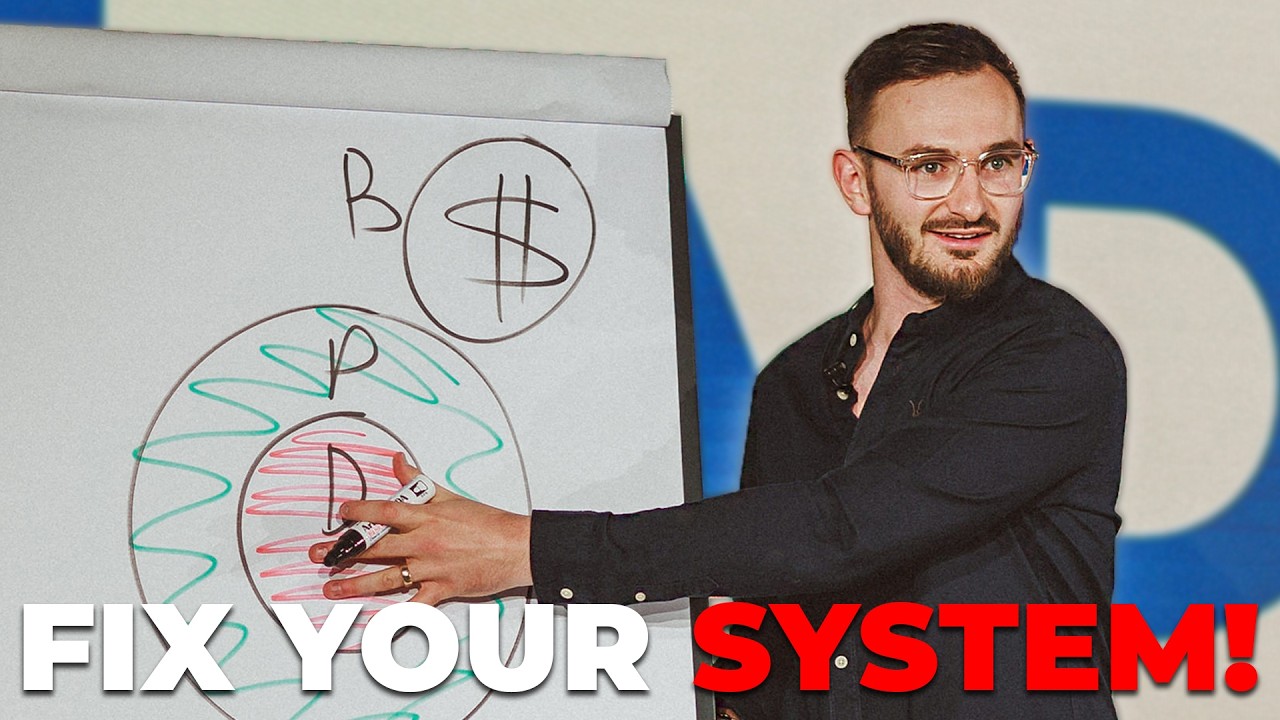Introduction
In a crowded marketplace, simply having a great product isn’t enough to guarantee success. The secret to attracting and retaining customers lies in how you position your offer. By mastering the art of positioning, you can make your product irresistible, draw in clients, and set your business up for long-term success. In this article, I’ll share some critical elements of effective positioning that have transformed my own business strategies.
Engaging Opening
If you’re tired of struggling to sell your products online, you’re not alone. I remember when I was in the same boat, overwhelmed by the competition and unsure how to stand out. But over the years, I’ve learned some powerful strategies that have helped me scale my business to $30 million in revenue. Now, I want to share these insights with you so you can effortlessly boost your sales and expand your reach. Imagine being able to attract customers without the usual stress and hustle. It’s not just a dream—it’s a reality you can achieve by leveraging proven techniques to captivate your audience and turn potential prospects into loyal customers. Let’s dive in and explore how you can transform your online selling approach today.
The Importance of Positioning and Delivery in Business Offers
There are six things that I want to tell you, and you’re going to want to write each of these down because they’re critically important. Businesses are making loads of money, but how is that possible when they have a crappy product? I have bottled this knowledge for as long as I can remember, and I figured out a solution that changed my life. I see people teaching outdated stuff that quite simply doesn’t work anymore. I feel this charge that I need to start sharing this.
There are two parts to this that are really important for you to be aware of. If you’re taking notes, you may even want to be scribbling these things down just to follow along. Okay, two things. Number one is the delivery of your offer. That’s the thing that people are actually going to get when they invest with you and become a client. This is what they are getting. The second thing, however, alongside delivery, is the positioning of that offer. The positioning wraps around the delivery. The positioning, your marketing, and the way you’re putting it out into the marketplace is what actually sells someone on the offer.
Many of the clients that we work with spend so much time working on delivery and making sure that it’s great, which is good. There’s nothing wrong with that. They think the value in the offer is based on how much stuff there is, but when it comes time to sell it, they haven’t really focused much on positioning at all. Prospective clients are not bypassing positioning to just hear about delivery, thinking, “I get 12 one-on-ones with you, but your competitor only gives me ten, so I get better value for money with you.” No, it’s the positioning that’s going to sell it. We can’t focus on the stuff; we must focus on how the stuff is being positioned.
This is represented in a scenario that we’ve probably all experienced. Have you ever bought something—a product, a program, a service—and once you purchased and used it, disappointment started to sink in? You didn’t know what the delivery was actually going to be like. What you were sold on is the positioning, the wrapper. It sounded great, and then that person or that business or that product did not back it up.
Let’s say we’ve got business A or business B, and we’ve got the delivery and the positioning. Let’s say business A, one of your competitors, has focused a lot on delivery but has not focused at all on positioning. Or we’ve got business B, which has focused so much on the positioning but not at all on the delivery. Which of these two businesses wins the customer? Business B does. They’re making loads of money, but how is that possible with a crappy product? It’s possible because they’ve got really good at marketing and positioning. If you find yourself focused only on delivery, something’s got to change. The ideal is that we nail both delivery and positioning, but you will not have the opportunity to deliver for anyone unless you learn the positioning.
So, how do we create an offer that is positioned so well that it draws people in, giving us the chance to deliver for them?
Six Key Aspects of Positioning
- Results-Oriented PositioningWhen you are thinking about the positioning of your offer, focus on results. Customers are buying into the result that they want and need, not your product. It’s the results they want and are signing up for. Your marketing and messaging should be results-oriented, focusing on the outcome for the client, not the features or stuff they get.
- Displayed UnderstandingYour prospects should feel understood. If they feel understood, they will feel a connection to you that they don’t have with your competition. Understand their pains and frustrations. Use stories, hooks, and angles that resonate with them, making them feel like you get it and trust is being built as a result.
- Simplify the DeliverablesSimplify your deliverables within the context of positioning. Don’t add more stuff. Focus on making the deliverables easy to understand and valuable in their simplicity, enhancing the overall positioning of your offer.
Focusing on these aspects will help you create a compelling offer that resonates with your prospects and gives you the opportunity to deliver your services effectively.
Focus on Results, Not More Stuff
Your prospects and potential clients don’t actually want more stuff; they want the result. It’s really important to remember this because if you focus on the fact that they want results, then everything you do to position your offer can be oriented toward that, not just adding more stuff. In my own experience, adding more stuff can actually lead to a bad offer. The bigger your product looks and sounds, the longer the distance to the result feels. Prospects want the quickest, simplest, and easiest path to the result. If it sounds like work, they don’t want to do it and won’t do it. Therefore, we don’t want our offer to sound big; we want it to sound small.
Less Is More
Think about it: if you had a problem similar to the one you help your audience solve, and you were offered a solution that required joining 30 different calls every week and 50 hours of one-on-one sessions, it would sound overwhelming. The person selling it might think they have a great offer because they’re giving so much, but the prospect is likely thinking, “I don’t want to go through all of that.” I signed up for programs before, like one with Alex Navas, where I paid $25,000 for three months of coaching. His offer was simple, which was part of the attraction because I’m busy and don’t want to go through a lot of stuff. This experience taught me that sometimes less is more. I even paid for a program and found myself wanting less stuff.
Simplifying Deliverables
When presenting your deliverables to your clients, don’t let one-on-one weekly calls compound. It’s a “use it or lose it” scenario. For example, if your offer is eight weeks long and you meet once a week, clients might not use the first few calls and then demand them all at the end. Instead, say, “We can meet up to once a week if you need it.” This approach works well for both parties. This idea came from my experience with Alex Navas, where I appreciated having the option but not the obligation to use every session.
A Lesson Learned
I have a vivid memory of losing a potential client due to offering too much. In 2018, I had a sales call with a prospect who was interested in our program. He said it sounded great but ultimately signed with a competitor. When I asked why, he said my program sounded too long and involved. He wanted the path of least resistance and chose a competitor with a simpler, shorter program. This taught me that clients want the result, not the stuff. Make sure your deliverables get them the result in the quickest time possible.
The Importance of a Client Journey
You need to present your offers in a way that shows a clear journey from A to Z. Prospects should be able to picture what being inside your program will be like and what it will do for them. Rather than saying, “I’ll get you to the result,” lay out a client journey. Describe what will happen each week, the outcomes, and what you’ll do if things aren’t on track. This approach works for online courses, coaching programs, services, and agencies. Help clients envision the journey they will go on.
Keep It Simple
Everything we’ve discussed so far needs to be presented simply. A confused mind never buys. If someone is confused or overwhelmed, they won’t make a buying decision. This applies to webinars, funnels, and sales calls. When prospects feel overwhelmed with too much information, they often say, “Let me think about it.” This usually means they’ve been given so much information that they can’t process it all at once. Understanding this is crucial to closing sales.
If we can find a way to simplify the description of our offer and the positioning of our offer, and if we can focus on these things—displaying understanding, simplifying the deliverable rules, and then simplifying the way we talk about those deliverables—and making sure the client journey ends in results, if we do all of that and just keep it at the forefront of our minds: How can I remove as much complexity from this as possible? How can I just hand it on a silver platter, so it’s clear that the offer sounds really great, sounds like all the stuff they want, sounds like it can get them to the results, and they understand it? Okay, I’m in a position where I can make a buying decision.
How many of you already charge or know that you would like to charge, once you launch your thing, let’s say at least $2,000? Fantastic. That’s half the room. That’s awesome. I class high ticket now. It’s relative to industry, right? What’s high ticket in one industry is not high ticket in another. So, just trying to boil it down and put it all into one pot: $2,000 is where we’re kind of at the start of high ticket, with potential changes industry to industry.
I won’t ask the rest of you to put your hands up, but it’s the rest of you that might want to think about increasing your price. You probably just have some limiting beliefs over how much you can charge, what you’re worth, and whether people will actually pay that price. Should I be getting case studies first before I charge high ticket? Should I be working for free first? I see one that I hear a lot and actually quite frustrates me. How many of you have heard that idea to work for free and then once you’ve got your case studies? Okay, well, I hate that. I think that’s so stupid because if you work for free, the people that you’re working for don’t care about or value the thing that you’re doing. So you end up just chasing people for these testimonials and you come across as so desperate.
I’ll give you another quick tip. What I think is much better, and this is what we do with our clients, is even if—how many of you feel emboldened? How many of you in the room are at that point in your journey right now where you’re almost ready to launch, but you haven’t done this business before, so you don’t actually have any success stories yet? Anyone feeling boldness? You had a few of you. Thank you for participating.
Okay, so here’s what you guys can do. You know what you’ve got is great. You know it can help people. You know it can serve people. But you haven’t got any success stories yet. Rather than working for free, you still build your value funnel, which we’re going to talk about tomorrow. You still turn on traffic. You still do all of this marketing stuff to find the right type of prospects. And when you’re offering it to your first few people, before they start asking about success stories, or how many people have you done this with before, you get in first.
And here’s the positioning: you say to the prospect, ‘Look, Linda, we can talk about price, and you’ll probably ask me about price. But look, here’s what I’m willing to do. I have bottled up this knowledge for as long as I can remember.’ Then you share a little bit about your story. ‘I went through this process and I figured out this solution, and it changed my life. I’ve been watching the industry, watching as people are teaching trash, teaching outdated stuff, teaching stuff that quite simply doesn’t work anymore. I feel this charge that I need to start sharing this with other people, hence why we’re on the phone right now.
Ready to take your business to the next level? Start charging what you’re truly worth and attract the clients who are serious about achieving real results. Embrace premium pricing and watch as you reduce stress, work with committed clients, and grow your business more efficiently. Don’t settle for less—make the leap to premium today and experience the transformative power of high-ticket sales. Click the link below to learn more and begin your journey toward a thriving, stress-free business!
Adopting a premium pricing strategy can revolutionize your business by attracting committed, high-quality clients who value your expertise. By positioning yourself confidently in the market and communicating the true value of your offerings, you not only increase your revenue but also improve client satisfaction and success rates. Remember, the key to success lies in knowing your worth and conveying that worth to your audience. Begin implementing these strategies today, and watch your business transform as you create more value with less stress and more rewarding relationships.






